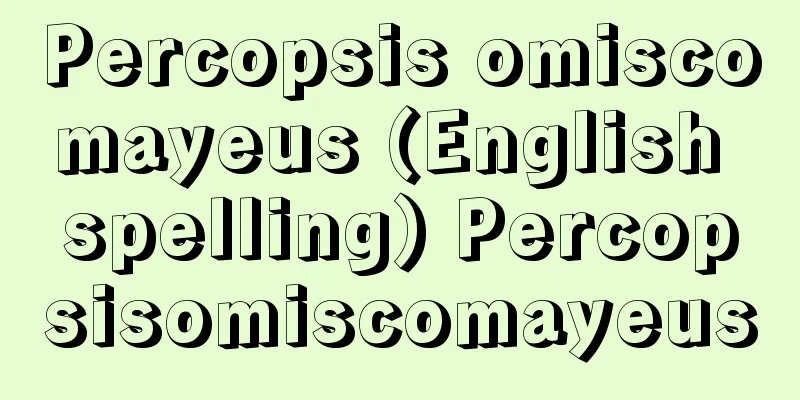Sepsis

|
Definition and Concept Sepsis is defined as a systemic inflammatory response syndrome (SIRS) caused by an infection. Systemic inflammatory response syndrome is a pathological condition caused by the body's acute response to severe invasion (burns, trauma, acute pancreatitis, etc.), and can be diagnosed if two or more of the following four symptoms are present: 1) fever of over 38°C or hypothermia of under 36°C, 2) tachycardia of over 90 beats per minute, 3) tachypnea or hyperventilation with a respiratory rate of over 20 beats per minute or PaCO2 of less than 32 Torr, and 4) peripheral blood leukocyte count of less than 4000/μL or over 12000/μL or immature neutrophils exceeding 10% of the leukocyte fraction. Severe sepsis is when acute organ failure due to reduced blood flow is observed in conjunction with sepsis. Septic shock is severe sepsis accompanied by hypotension resistant to fluid management. Hypotension is defined as a systolic blood pressure less than 90 mmHg or a decrease in blood pressure of more than 40 mmHg from baseline. The combination of fever and hypotension alone is not a basis for the diagnosis of septic shock. Causes and pathogenesis In cases where sepsis is suspected, a search for primary infection sites such as pneumonia, pyelonephritis, cellulitis, and surgical wound infections is conducted based on the medical history, physical examination, and general test results. Bacteremia caused by Gram-negative bacilli or Staphylococcus aureus is likely to be fatal, so in cases where sepsis is clinically suspected, a prompt and accurate diagnosis is required. Fever during neutropenia associated with systemic chemotherapy using anticancer drugs has a particularly high mortality rate and requires careful attention. In particular, it is important to distinguish between healthcare-associated infections and community-acquired infections, recent medication history, details of recent surgeries and procedures, and underlying diseases. If there is valvular disease in the background, endocarditis will be at the top of the differential diagnosis, and if there is some kind of intestinal or biliary disease, intraperitoneal infection should be considered. If bacteremia of multiple bacteria, including anaerobic bacteria, is observed, intraperitoneal infection is strongly suspected, but in women, gynecological pelvic infection should also be considered. After splenectomy, there is an increased risk of bacteremia caused by Streptococcus pneumoniae, Neisseria meningitidis, and Haemophilus influenzae. Vibrio vulnificus should be considered when eating raw seafood. Salmonella infections are on the rise in Japan. Clinical symptoms and diagnosis Clinical symptoms associated with sepsis include chills, fever, myalgia, tachycardia, and tachypnea. Physical examination should include skin findings such as the presence of a rash characteristic of meningococcal bacteremia and disseminated gonorrhoeae infection, and subungual hemorrhage suggestive of endocarditis. Abdominal findings should also include the rectum and pelvic cavity. Any wounds should be carefully evaluated. Chest auscultation findings are also important, but chest X-ray findings should be evaluated even in the absence of respiratory symptoms. General examinations include complete blood count, differential white blood cell count, qualitative urine and urinary sediment, chest X-ray, and Gram staining of all exudates, including sputum Gram staining. However, the most important test is blood culture, and two or more sets of blood culture specimens should always be taken. When a catheter-related bloodstream infection is suspected, at least one sample should be taken from a peripheral vein, as blood taken from the catheter often gives false positives. If a patient with an indwelling central venous catheter develops a fever, it is not necessary to remove the catheter; however, if there are clear signs of infection at the insertion site, sepsis is suspected, or blood cultures are positive, the catheter should be removed and the patient's blood cultured for a culture test. Considering the subsequent administration of antibiotics, evaluation of liver and kidney function is also essential. In cases where septic shock is suspected, a more rapid decision-making process is particularly important. When fever and decreased blood pressure coexist, differential diagnoses include bacterial pericarditis, mediastinitis, and severe pneumonia with hypoxemia, but toxic shock due to Staphylococcus aureus or group A streptococcus (GAS), and non-infectious diseases such as anaphylactic shock should also be considered. TreatmentWhen the primary focus of sepsis is known, local control is important, including aggressive drainage of abscesses, surgical removal of necrotic tissue (debridement), and removal of removable medical devices such as central venous catheters. On the other hand, careful follow-up is essential for cases of sepsis where the primary focus of infection is unknown. In most cases, volume loading should be performed through fluid management, and supportive therapy such as correction of hypoxemia and acidosis and administration of vasopressors is important. Blood glucose levels should be kept below 150 mg/dL, even with the use of fast-acting insulin. Selection of antibacterial therapy is important for definitive treatment, and as a rule, intravenous administration of bactericidal antibiotics is selected. Recently, the appearance of carbapenems and fourth-generation cephalosporins has expanded the possibility of single-drug therapy. The usefulness of systemic high-dose steroid administration has not been established, but in cases of relative adrenal insufficiency, administration of corticosteroids is necessary. The clinical efficacy of anti-endotoxin monoclonal antibodies and IL-1 receptor antagonists has not been evaluated, and there is a strong opposition to the administration of anti-TNF antibodies. Prophylactic administration of the 23-valent pneumococcal vaccine is recommended for patients who have undergone splenectomy or for patients with severe splenic insufficiency due to asplenia or sickle cell disease. Many guidelines have been published for preventing infections associated with intravascular catheters. In the management of central venous catheters, the most important thing is to determine the indication, and even if nutritional management is necessary, enteral nutrition should be considered as the first priority whenever possible. Medicinal fluids administered into the blood vessels, especially high-calorie infusions, should be prepared in a sterile environment in the pharmacy whenever possible. In addition, when inserting a central venous catheter, maximal barrier precautions are recommended, using sterile gloves, a sterile gown with sleeves, a mask and hat, and a large clean cloth. In addition, in the management of peripheral venous catheters, it is important to prevent the complication of phlebitis, so catheters made of antithrombotic materials should be selected and inserted into the veins of the upper limbs. It is appropriate to limit the duration of placement of a peripheral venous catheter to 96 hours, and it is advisable to change the infusion line when changing the catheter. [Yuji Morisawa] ■ References Dellinger RP, Carlet JM, et al: Surviving Sepsis Campaign guidelines for management of severe sepsis and septic shock. Crit Care Med, 32: 858-873, 2004. Mermel LA, Farr BM, et al: Guidelines for the management of intravascular catheter-related infections. Clin Infect Dis, 32: 1249-1272, 2001. Takezawa J, Inoue Y, et al: Guidelines for the management of catheter-related bloodstream infections, 2nd ed. Research on the management and operation of medical equipment and the environment for infection in hospitals to prevent hospital-acquired infections, 2002, Ministry of Health, Labour and Welfare Science Research Grant (Comprehensive Research Project on Pharmaceutical Safety), 2003. Source : Internal Medicine, 10th Edition About Internal Medicine, 10th Edition Information |
|
定義・概念 敗血症は感染症による全身性炎症反応症候群(systemic inflammatory response syndrome:SIRS)と定義される.全身性炎症反応症候群とは,重篤な侵襲(熱傷,外傷,急性膵炎など)に対する生体の急性反応による病態であり,①体温38℃をこえる発熱あるいは体温36℃未満の低体温,②脈拍数90/分をこえる頻脈,③呼吸数20/分をこえるか,PaCO2 32 Torr未満となる頻呼吸・過換気,④末梢血白血球数が4000/μL未満か12000/μLをこえるか幼若好中球が白血球分画で10%をこえる場合の4つの症状のなかで2つ以上を認めれば診断してよい.敗血症に伴って血流低下による急性臓器不全が認められる場合を重症敗血症(severe sepsis)という.敗血症性ショック(septic shock)とは輸液管理に抵抗性の低血圧を伴う重症敗血症をいう.低血圧とは収縮期血圧90 mmHg未満あるいはベースラインから40 mmHgをこえる血圧の低下によって定義される.発熱と血圧低下が併存するだけでは敗血症性ショックの診断の根拠とならない. 原因・病因 敗血症を疑う症例では,病歴聴取,身体所見,一般検査所見から肺炎,腎盂腎炎,蜂巣炎,手術創部感染症などの原発感染巣の検索を進める.Gram陰性桿菌や黄色ブドウ球菌(Staphylococcus aureus)による菌血症は致死的となる可能性が高く,臨床的に敗血症を疑う症例では迅速かつ的確に診断を進める必要がある.抗癌薬投与による全身的化学療法に伴う好中球数減少時の発熱は死亡率が特に高く注意が必要である.特に医療関連感染症と市中感染症の区別,最近の服薬歴,最近の手術や処置の内容,そして基礎疾患が重要である.背景に弁膜症があれば鑑別診断として心内膜炎が上位を占めることになり,何らかの腸管疾患や胆道系疾患があれば腹腔内感染症を考える.嫌気性菌を含む複数菌の菌血症が認められれば腹腔内感染症を強く疑うことになるが,女性の場合はさらに婦人科領域の骨盤腔内感染症を考えておく.脾摘後の症例では肺炎球菌(Streptococcus pneumoniae)や髄膜炎菌(Neisseria meningitidis),インフルエンザ菌(Haemophilus influenzae)の菌血症のリスクが高くなる.海産物の生食ではVibrio vulnificusを考慮すべきである.わが国ではサルモネラ(Salmonella)感染症が増加している. 臨床症状・診断 敗血症に伴う臨床症状は悪寒・発熱,筋痛,頻脈,頻呼吸があり,身体所見では,髄膜炎菌菌血症や播種性淋菌(Neisseria gonorrhoeae)感染症に特徴的な皮疹の存在や心内膜炎を示唆する爪下出血などの皮膚所見,腹部所見では直腸や骨盤腔内にも注意すべきである.創傷部位があれば慎重に評価する必要がある.胸部聴診所見も重要であるが,呼吸器症状を認めない場合にも胸部X線所見は評価しておくのがよい.一般検査では血算,白血球分画,尿定性と尿沈渣,胸部X線,痰Gram染色を含む認められるすべての滲出液のGram染色などが重要であるが,最も重要なのは血液培養検査であり,必ず2セット以上の血液培養検体を採取する.カテーテル関連血流感染症を疑う場合,カテーテルからの採血は偽陽性も少なくないため,少なくとも1検体は末梢静脈から採取すべきである.中心静脈カテーテルが留置されている症例に発熱を認めた場合,必ずしもカテーテルを抜去する必要はないが,刺入部位に感染徴候が明らかであったり敗血症を疑うような場合,または血液培養が陽性となった場合にはカテーテルを抜去して培養検査に提出すべきである.その後の抗菌薬の投与を考慮すると肝腎機能の評価も必須である.敗血症性ショックを疑う症例では,特にいっそう迅速な方針決定が必要となる.発熱と血圧低下が併存する場合には細菌性心膜炎,縦隔炎,低酸素血症を伴う重症肺炎,などの鑑別診断があがるが,黄色ブドウ球菌やA群連鎖球菌(GAS)によるトキシックショック,非感染症ではアナフィラキシーショックなども考慮する. 治療 敗血症の原発巣が明らかな場合,積極的な膿瘍のドレナージや壊死組織の外科的除去(デブリドマン),中心静脈カテーテルなどの除去可能な医療器具の抜去など,局所コントロールが重要である.一方,原発感染巣が不明な敗血症の症例は慎重な経過観察が最も重要である.ほとんどの場合で輸液管理による容量負荷を施行すべきであり,低酸素血症やアシドーシスの補正,昇圧薬投与などの補助療法が重要である.血糖値は速効性インスリンを用いてでも150 mg/dL以下に保つことが求められる.根本的な治療には抗菌療法の選択が重要であるが,原則として殺菌的な抗菌薬の静注投与を選択する.最近ではカルバペネム系や第4世代セフェムの登場により単剤治療の可能性も広がっている.全身的大量ステロイド投与の有用性は確立されていないが,相対的副腎不全となっている症例では副腎皮質ホルモンの投与が必要である.抗エンドトキシン・モノクローナル抗体やIL-1受容体拮抗物質の臨床効果は評価が定まっておらず,抗TNF抗体の投与には否定的な意見が多い. 予防 脾摘出後あるいは無脾症,鎌状赤血球症などの重篤な脾機能不全の患者に対しては肺炎球菌23価ワクチンの接種が推奨される. 血管内留置カテーテルに関連した感染症を予防するためのガイドラインは数多く公表されている.中心静脈カテーテルの管理においてもやはり最も重要なのは適応の見極めであり,栄養管理が必要な場合もまずは可能なかぎり経腸栄養を優先して検討すべきである.血管内に投与する薬液,特に高カロリー輸液は可能なかぎり薬剤部で無菌環境のもとに調整されるべきである.また,中心静脈カテーテル挿入時には滅菌手袋,袖つき滅菌ガウン,マスクと帽子,および大きな清潔覆布を使用したマキシマルバリアプリコーションが推奨されている.なお,末梢静脈カテーテルの管理においては静脈炎の合併を予防することが重要であり,抗血栓性材質のカテーテルを選択すべきであり,上肢の静脈に挿入するのがよい.末梢静脈カテーテルの留置は96時間を上限とするのが適当であり,輸液ラインもカテーテルの刺し替え時に交換するのがよい.[森澤雄司] ■文献 Dellinger RP, Carlet JM, et al: Surviving Sepsis Campaign guidelines for management of severe sepsis and septic shock. Crit Care Med, 32: 858-873, 2004. Mermel LA, Farr BM, et al: Guidelines for the management of intravascular catheter-related infections. Clin Infect Dis, 32: 1249-1272, 2001.武澤 純,井上善文,他:カテーテル関連血流感染対策ガイドライン,第2版.平成14年度厚生労働科学研究費(医薬安全総合研究事業)院内感染を防止するための医療器具及び院内感染環境の管理及び運用に関する研究,2003. 出典 内科学 第10版内科学 第10版について 情報 |
Recommend
Aravidu (English spelling)
…1336-1649. It was succeeded by four different ro...
Detention - Kouryuu
〘noun〙① To capture and detain. To detain. To be de...
Enoshima Shrine
It is located on Enoshima in Fujisawa City, Kanag...
Surrounding rice - Surrounding rice
In the Edo period, the shogunate, feudal lords, vi...
緌 - Hosuke
〘 noun 〙 A formal attire for military officers, at...
Greenshank - Greenshank
A bird of the family Scolopacidae in the order Ch...
Observation and treatment
…In 733-734 (Kaiyuan 21-22), they were renamed as...
Tokyo Metropolitan University
Currently Tokyo Metropolitan University. A compre...
Old Temple of Athena Polias - Old Temple of Athena Polias
…A temple located in the north of the Athenian Ac...
Tomigusuku [village] - Tomigusuku
A village in the southwest of Okinawa Island (main...
Sasaki Mochikiyo
1417‐70 (Oei 24‐Bunmei 2) A military commander in ...
Masamura Hojo
Year of death: Bun'ei 10.5.27 (1273.6.13) Year...
Mahabalipuram - Mahabalipuram (English spelling)
A representative Hindu ruin of the Pallava dynast...
《Ki-soku Taigi》
…He passed the imperial examination in 1825, but ...
LWR - Eldabourre
《 light water reactor 》⇒ light water reactor LWR [...









